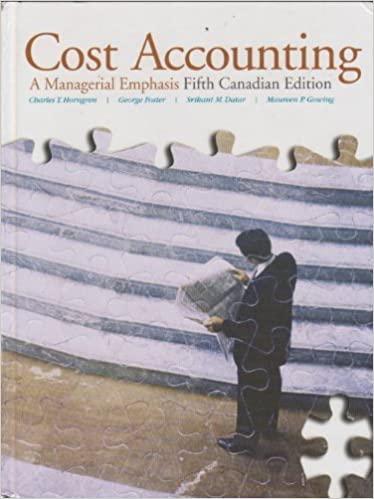Net realizable value cost-allocation method, further process decision. (W. Crum) A crushhaere ing and refining process for
Question:
Net realizable value cost-allocation method, further process decision. (W. Crum) A crushhaere ing and refining process for mineral ore is performed by Montore Inc. It creates three main pital inetd net products, Alco, Devo, and Holo, in a joint-cost operation. Costs and production information for realizable value at splitoff, 2010are aollog
$672,000
® Department 1, at initial joint costs of $504,000, produces 20,000 kilograms of Alco, 60,000 kilograms of Devo, and 100,000 kilograms of Holo.
® Department 2 processes Alco further at a cost of $120,000.
® Department 3 processes Devo further at a cost of $240,000.
Results for 2010 are
@ Alco: 20,000 kilograms completed; 19,000 kilograms sold for $24 per kilogram; ending inventory, 1,000 kilograms.
® Devo: 60,000 kilograms completed; 59,000 kilograms sold for $7.20 per kilogram; ending inventory, 1,000 kilograms.
® Holo: 100,000 kilograms completed; 99,000 kilograms sold for $1.20 per kilogram; ending inventory, 1,000 kilograms; Holo required no further processing.
REQUIRED 3 1. Compute the total costs and unit costs of the ending inventories using the NRV method to allocate the joint costs to the three products.
2. Determine the individual gross margin percentages of the three products.
3. Montore receives an offer to sell all its Devo product for a price of $2.40 per kilogram at the splitoff point before going through Department 3, just as it comes off the production line in Department 1. Using last year’s figures, would Montore be better off by selling Devo that way, or processing it through Department 3 and selling it? Show computations to support your answer. Disregard all other factors not mentioned in the problem.
LO1
Step by Step Answer:

Cost Accounting A Managerial Emphasis
ISBN: 9780135004937
5th Canadian Edition
Authors: Charles T. Horngren, Foster George, Srikand M. Datar, Maureen P. Gowing





